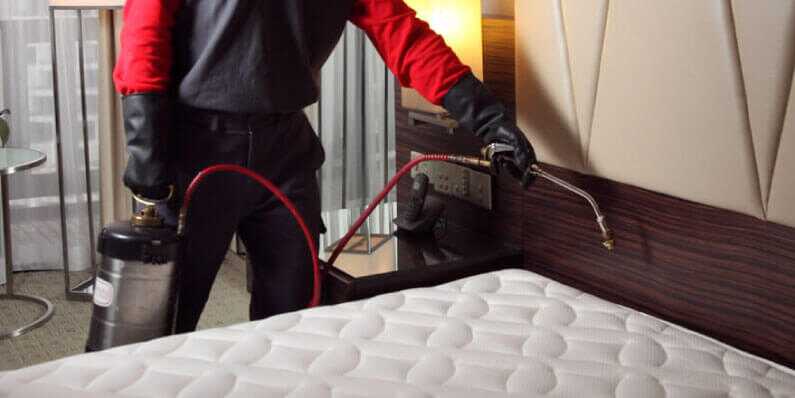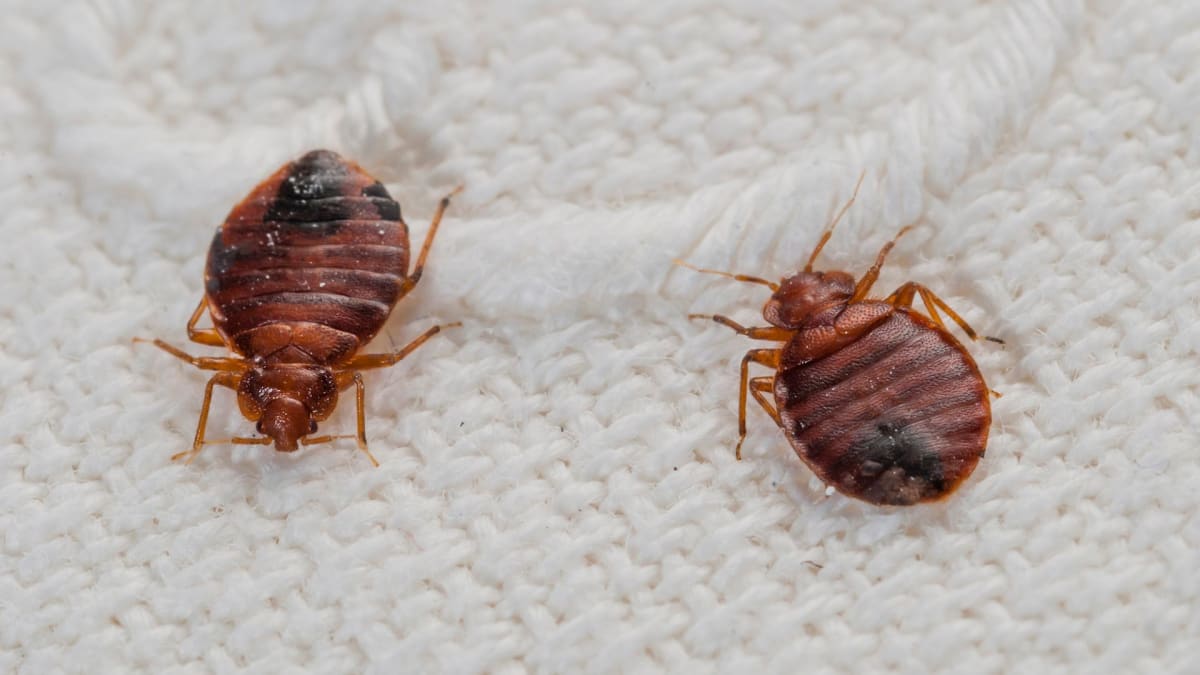Certified Bed Bug Exterminator Near Me: DC Heat Treatment Specialists
Wiki Article
Checking Out the Science Behind Bed Insect Warmth Treatments as a Sustainable Parasite Administration Approach
In the realm of parasite management, the pursuit for reliable and sustainable options remains a continuous search. One such method that has actually obtained traction recently is the usage of heat therapies to combat bed insect problems. By utilizing the scientific research behind thermal death points for these consistent pests, heat therapies supply an appealing choice to conventional chemical-based strategies. The intricacies of exactly how warmth efficiently removes bed pests and the broader ramifications for sustainable parasite management practices make this a topic worth discovering better.Bed Pest Warmth Treatment Process

Thermal Fatality Point for Bed Pests
Subjecting bed insects to elevated temperatures beyond their thermal tolerance range is important for accomplishing efficient removal in warmth therapy procedures. By getting to and preserving temperature levels above the thermal death point for bed bugs, parasite monitoring specialists can make certain thorough removal of bed insect populations, including hard-to-reach areas where chemical therapies might be less effective. Understanding the thermal fatality factor for bed insects is vital for executing successful warmth therapy techniques and achieving sustainable pest monitoring end results.Advantages of Heat Treatments
Having actually developed the important thermal death factor for bed insects, it is critical to currently check out the significant benefits that warm treatments supply in successfully eliminating these resilient parasites. Warm treatments existing a number of key advantages when compared to traditional chemical approaches. One of the key advantages is that heat can penetrate deep right into holes and splits where bed insects hide, ensuring that also the most hard-to-reach areas are heated up to lethal temperature levels. This extensive technique not just eliminates real-time insects yet likewise targets bed pest eggs, avoiding future problems.In addition, heat treatments are eco pleasant and safe, making them a sustainable insect administration method. Unlike chemical pesticides, warmth treatments do not leave damaging deposits that can posture threats to human wellness or the environment. This aspect is particularly essential in sensitive atmospheres such as health centers, schools, and suburbs where chemical use may not be desirable.
Furthermore, warmth therapies have a high success price in removing bed insect problems in a solitary treatment, minimizing the requirement for several check outs and lessening disturbance to passengers. This performance not just conserves time and cash however likewise offers satisfaction to those handling bed bug problems.
Performance of Warmth Treatment

Research researches have continually shown the effectiveness of warmth treatments in attaining a high rate of bed pest death. Properly performed heat therapies can get to all the fractures and crevices where bed insects may be nurturing, ensuring a detailed approach to elimination. Warmth treatments have the added advantage of killing bed insect eggs, which are often resistant to standard chemical therapies. In general, the efficiency of heat therapies in eliminating bed insect infestations makes them a trustworthy and lasting bug management method.
Lasting Parasite Monitoring Conveniences
Applying lasting bug administration methods provides long-term advantages for both the setting and public health and wellness. By using techniques such as heat therapies for bug control, we can minimize the reliance on harmful chemical pesticides that can have damaging impacts on environments and human health and wellness - bed bug heat treatment. Sustainable pest monitoring methods help in maintaining biodiversity by targeting certain insects without damaging non-target organisms, thereby keeping a balanced ecosystem
In addition, sustainable pest monitoring practices add to the overall wellness and wellness of the general public. By reducing direct exposure to harmful chemicals made use of in conventional parasite control approaches, heat therapies provide a much safer choice for insect monitoring in domestic, industrial, and public spaces. This reduction in chemical use additionally helps in stopping chemical deposits from contaminating dirt, air, and water, safeguarding environmental top quality.
Conclusion
Finally, bed pest warmth treatments have been shown to be a sustainable and efficient bug monitoring technique. The thermal death factor for bed pests makes them susceptible to heat treatments, which have many benefits visit the website over traditional chemical treatments. The efficiency of warm therapies in removing bed pest problems while minimizing environmental effect highlights the possibility of this approach as a lasting solution for pest control.The bed bug heat treatment process includes elevating the temperature within plagued locations to a degree that properly removes bed pests and their eggs. By getting to and keeping temperature levels over the thermal fatality factor for bed insects, bug monitoring specialists can make certain you can find out more thorough elimination of bed bug populations, including hard-to-reach areas where chemical treatments might be less efficient. One of the main benefits is that warmth can permeate deep into splits and gaps where bed bugs hide, guaranteeing that even the most hard-to-reach areas are heated to lethal temperatures. Unlike chemical therapies that may leave behind resistant populaces, warmth treatments offer a eco friendly and safe service that can permeate deep into furnishings, walls, and other hard-to-reach locations where bed bugs conceal.
click here to find out more The thermal fatality point for bed insects makes them susceptible to warm treatments, which have various advantages over standard chemical treatments.
Report this wiki page